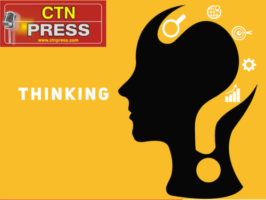MULTIPLE-CHOICE QUESTIONS WITH ANSWERS RELATED TO LEASING OF PLANT AND MACHINERY
1. Which of the following is the primary regulatory body overseeing leasing transactions in India?
a) Reserve Bank of India (RBI)
b) Securities and Exchange Board of India (SEBI)
c) Ministry of Finance
d) Indian Banks’ Association (IBA)
Answer: a) Reserve Bank of India (RBI)
2. What is the term used for the period over which the lessee has the right to use the leased asset?
a) Lease period
b) Rental period
c) Lease term
d) Utilization period
Answer: c) Lease term
3. Which type of lease is characterized by the lessee having the option to purchase the asset at the end of the lease term?
a) Operating lease
b) Financial lease
c) Sale and leaseback
d) Leveraged lease
Answer: b) Financial lease
4. In India, which accounting standard governs the accounting of leases?
a) AS 17
b) AS 19
c) AS 21
d) AS 24
Answer: b) AS 19
5. Which tax benefit can be availed by the lessee in a finance lease arrangement in India?
a) Depreciation on the leased asset
b) Lease rental deduction as an expense
c) Investment allowance
d) Interest on lease payments
Answer: b) Lease rental deduction as an expense
6. Under a financial lease in India, who bears the risk of obsolescence of the leased asset?
a) Lessor
b) Lessee
c) Both lessor and lessee
d) Insurance company
Answer: b) Lessee
7. What is the main advantage for a company to lease machinery instead of purchasing it?
a) Higher interest rates
b) Lower operational flexibility
c) Reduced initial capital outlay
d) Ownership of the asset
Answer: c) Reduced initial capital outlay
8. Which of the following is NOT a feature of an operating lease?
a) Short-term duration
b) Maintenance responsibility lies with the lessor
c) Option to purchase at the end of the lease
d) Higher rental payments
Answer: c) Option to purchase at the end of the lease
9. What type of lease is often used to finance the acquisition of heavy machinery where the asset’s ownership remains with the lessor?
a) Operating lease
b) Financial lease
c) Hire purchase
d) Installment sale
Answer: a) Operating lease
10. In a sale and leaseback transaction, what does the original owner of the asset do?
a) Buys the asset and leases it to another party
b) Sells the asset to a lessor and leases it back
c) Leases the asset from another party
d) Retains ownership and rents it out
Answer: b) Sells the asset to a lessor and leases it back
13. Which of the following is a key difference between an operating lease and a finance lease?
a) Duration of the lease
b) Ownership transfer at the end of the lease term
c) Amount of lease payments
d) Maintenance responsibilities
Answer: b) Ownership transfer at the end of the lease term
12. In a finance lease, who typically claims the depreciation on the leased asset for tax purposes?
a) Lessor
b) Lessee
c) Both lessor and lessee
d) Neither party
Answer: b) Lessee
13. What is the typical duration of an operating lease?
a) Less than 1 year
b) 1-3 years
c) 3-5 years
d) More than 5 years
Answer: b) 1-3 years
14. What is a residual value in the context of leasing?
a) The initial cost of the leased asset
b) The value of the leased asset at the end of the lease term
c) The total lease payments made by the lessee
d) The amount of depreciation on the leased asset
Answer: b) The value of the leased asset at the end of the lease term
15. Which financial document would reflect the lease payments made by a company?
a) Balance sheet
b) Income statement
c) Cash flow statement
d) Statement of changes in equity
Answer: b) Income statement
16. Under an operating lease, who bears the cost of maintenance and repairs?
a) Lessor
b) Lessee
c) Shared equally by lessor and lessee
d) Determined by the lease agreement
Answer: a) Lessor
17. Which type of lease arrangement is most beneficial for companies looking to keep assets off their balance sheets?
a) Operating lease
b) Finance lease
c) Capital lease
d) Sale and leaseback
Answer: a) Operating lease
18. How is an operating lease recorded on the balance sheet of the lessee?
a) As an asset
b) As a liability
c) Not recorded on the balance sheet
d) As both an asset and a liability
Answer: c) Not recorded on the balance sheet
19. What is a common reason for a company to enter into a sale and leaseback transaction?
a) To upgrade old machinery
b) To free up capital while continuing to use the asset
c) To sell the asset at a higher price
d) To transfer maintenance responsibility to the lessor
Answer: b) To free up capital while continuing to use the asset
20. Which of the following best describes a leveraged lease?
a) A lease where the lessor finances the asset through equity
b) A lease involving a third-party lender to finance the asset
c) A short-term lease agreement
d) A lease with variable interest rates
Answer: b) A lease involving a third-party lender to finance the asset
21. What is the primary benefit of leasing for a lessee?
a) Reduced maintenance costs
b) Lower insurance premiums
c) Preservation of cash flow
d) Ownership of the asset
Answer: c) Preservation of cash flow
22. Under Indian law, what is the GST rate applicable on the leasing of plant and machinery?
a) 5%
b) 12%
c) 18%
d) 28%
Answer: c) 18%
23. Which type of lease is typically non-cancellable by the lessee?
a) Finance lease
b) Operating lease
c) Sale and leaseback
d) Open-ended lease
Answer: a) Finance lease
24. What does the term “lease rental” refer to?
a) The purchase price of the leased asset
b) The periodic payments made by the lessee to the lessor
c) The maintenance cost of the leased asset
d) The final purchase price at the end of the lease
Answer: b) The periodic payments made by the lessee to the lessor
25. Which of the following is not typically a responsibility of the lessee in a finance lease?
a) Insurance of the asset
b) Maintenance of the asset
c) Depreciation of the asset
d) Paying property taxes on the asset
Answer: c) Depreciation of the asset
26. What is the main advantage of a sale and leaseback arrangement for the seller-lessee?
a) Immediate cash inflow
b) Ownership of the asset
c) Higher lease payments
d) Reduced tax liability
Answer: a) Immediate cash inflow
27. In a lease agreement, what is the “lease inception date”?
a) The date when the lease payments begin
b) The date when the lease agreement is signed
c) The date when the asset is delivered to the lessee
d) The date when the lease term ends
Answer: b) The date when the lease agreement is signed
28. What is typically included in the “lease agreement”?
a) Lease term and payment schedule
b) Maintenance and insurance responsibilities
c) Option to purchase at the end of the lease
d) All of the above
Answer: d) All of the above
29. Which of the following is a disadvantage of leasing for the lessee?
a) High initial cash outlay
b) Risk of obsolescence
c) No ownership of the asset
d) Maintenance responsibility
Answer: c) No ownership of the asset
30. What is a “bargain purchase option” in a lease agreement?
a) An option to renew the lease at a lower rate
b) An option to buy the leased asset at a price lower than its expected fair value
c) An option to upgrade the leased asset
d) An option to extend the lease term without additional cost
Answer: b) An option to buy the leased asset at a price lower than its expected fair value
31. Under which lease does the lessor provide an option for the lessee to purchase the asset at the end of the lease term?
a) Operating lease
b) Finance lease
c) Leaseback lease
d) Leveraged lease
Answer: b) Finance lease
32. What is the primary accounting treatment for a finance lease on the lessee’s balance sheet?
a) Recognize the asset and a corresponding liability
b) Only recognize lease payments as expenses
c) Do not record the lease on the balance sheet
d) Recognize a liability only
Answer: a) Recognize the asset and a corresponding liability
33. In India, how are lease payments typically treated for tax purposes by the lessee?
a) Fully deductible as an expense
b) Partially deductible based on depreciation
c) Not deductible
d) Considered as capital expenditure
Answer: a) Fully deductible as an expense
34. What is a “triple net lease”?
a) A lease where the lessee pays for net maintenance, net insurance, and net property taxes
b) A lease with three different lessors
c) A short-term lease with low payments
d) A lease with options to renew at three different intervals
Answer: a) A lease where the lessee pays for net maintenance, net insurance, and net property taxes
35. Who typically takes on the risk of the asset’s residual value in an operating lease?
a) Lessor
b) Lessee
c) Both lessor and lessee
d) Financial institution
Answer: a) Lessor
36. In the context of leasing, what does “lease term” refer to?
a) The period over which lease payments are made
b) The total cost of the lease
c) The time taken to negotiate the lease
d) The time taken for the lessee to obtain the asset
Answer: a) The period over which lease payments are made
37. What is “lease amortization”?
a) The process of reducing the lease liability through periodic payments
b) The calculation of interest on lease payments
c) The extension of the lease term
d) The renegotiation of lease terms
Answer: a) The process of reducing the lease liability through periodic payments
38. Which type of lease typically does not appear as a liability on the lessee’s balance sheet?
a) Finance lease
b) Operating lease
c) Capital lease
d) Leveraged lease
Answer: b) Operating lease
39. Which of the following is often a feature of a finance lease?
a) Short-term agreement
b) Transfer of ownership at the end of the lease term
c) No impact on lessee’s balance sheet
d) High flexibility in terms of early termination
Answer: b) Transfer of ownership at the end of the lease term
40. How are “initial direct costs” associated with leasing typically treated?
a) Expensed immediately
b) Capitalized as part of the leased asset
c) Ignored in financial statements
d) Included in lease payments
Answer: b) Capitalized as part of the leased asset
41. What is the typical consequence for the lessee if they default on a finance lease?
a) The lease is automatically extended
b) The leased asset is repossessed by the lessor
c) The lessee becomes the owner of the asset
d) No consequences as leases cannot be defaulted
Answer: b) The leased asset is repossessed by the lessor
42. In leasing, what does “Lessor” refer to?
a) The party that owns the asset and provides it for lease
b) The party that leases the asset from the owner
c) A third-party guarantor in the lease agreement
d) The manufacturer of the leased asset
Answer: a) The party that owns the asset and provides it for lease
43. What type of lease is commonly used for equipment that becomes outdated quickly?
a) Finance lease
b) Operating lease
c) Sale and leaseback
d) Capital lease
Answer: b) Operating lease
44. What does “off-balance-sheet financing” refer to in the context of leasing?
a) Financing where the lease does not appear on the balance sheet as a liability
b) Financing secured without any lease agreement
c) Financing that includes the lease on the balance sheet
d) Financing that is contingent on future lease agreements
Answer: a) Financing where the lease does not appear on the balance sheet as a liability
45. In a finance lease, the lease payments are typically structured to cover which of the following?
a) Depreciation of the asset
b) Interest on the lease
c) Maintenance costs
d) Both depreciation and interest
Answer: d) Both depreciation and interest
46. What is a “leasehold improvement”?
a) Improvements made to a leased asset by the lessor
b) Modifications made to the leased asset by the lessee
c) Increases in the value of the leased asset over time
d) Enhancements to the lease agreement terms
Answer: b) Modifications made to the leased asset by the lessee
47. What type of lease allows the lessee to terminate the lease before the end of the lease term without significant penalty?
a) Finance lease
b) Operating lease
c) Closed-end lease
d) Open-end lease
Answer: d) Open-end lease
48. Which of the following is an example of a “lease inducement”?
a) Offering a lower lease rate to encourage signing the lease
b) Requiring a higher deposit to secure the lease
c) Extending the lease term without additional cost
d) Providing the asset maintenance free of charge
Answer: a) Offering a lower lease rate to encourage signing the lease
49. What is “subleasing”?
a) Leasing a part of the leased asset to another party
b) Terminating the original lease before its term
c) Modifying the terms of the original lease
d) Leasing additional assets under the same lease agreement
Answer: a) Leasing a part of the leased asset to another party
50. In which scenario is a lease considered “non-cancellable”?
a) When the lessee has no option to terminate the lease early
b) When the lease term is less than one year
c) When the lease includes a purchase option
d) When the lease payments are variable
Answer: a) When the lessee has no option to terminate the lease early


